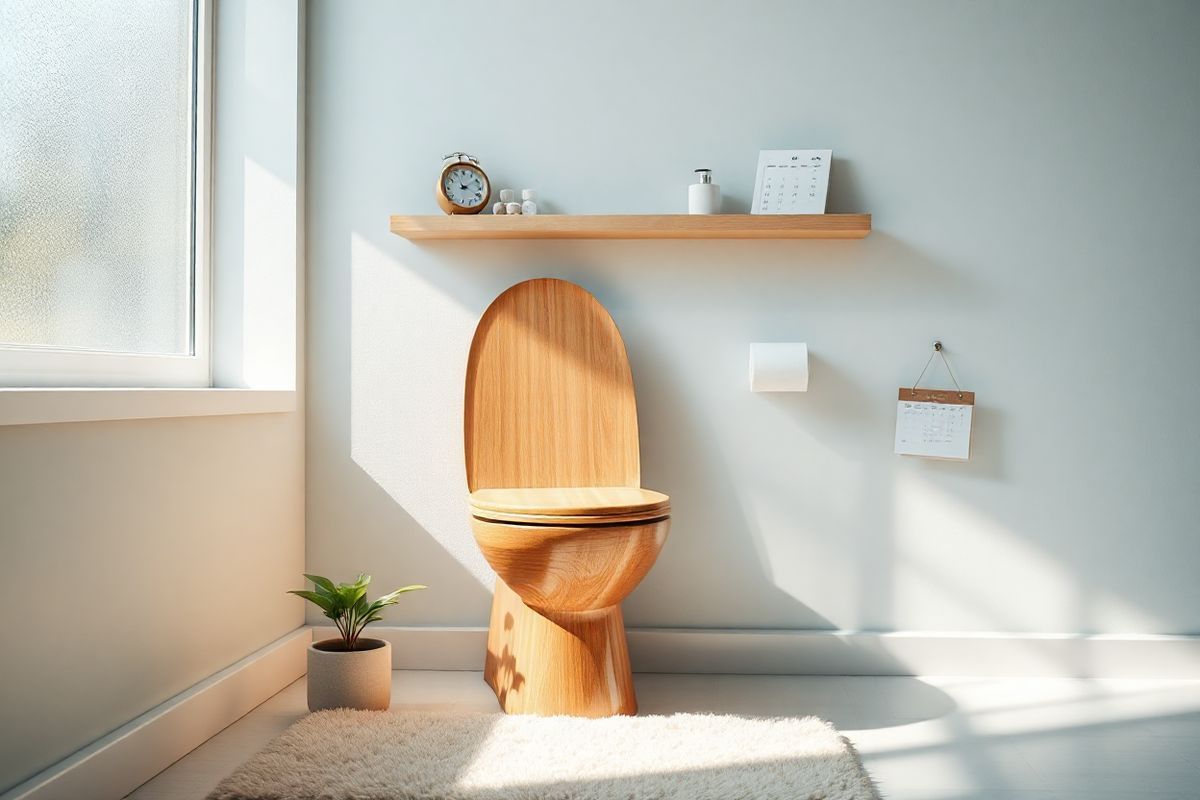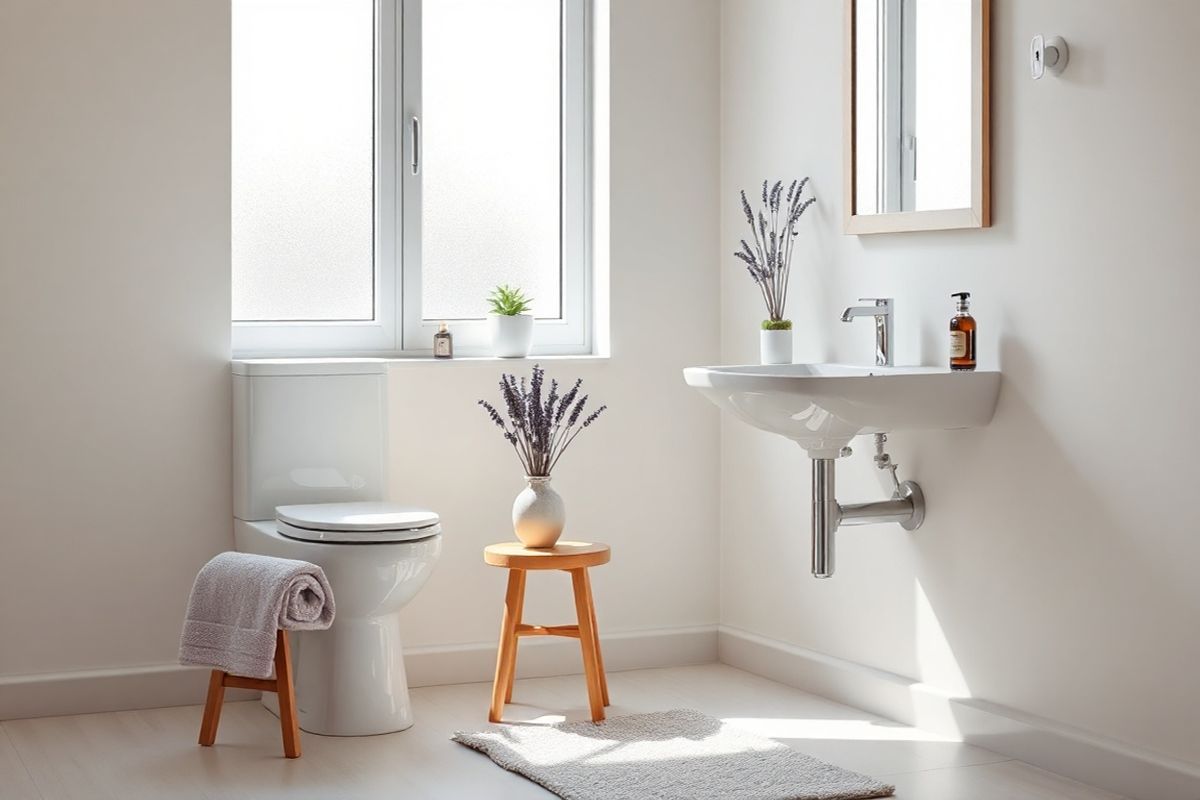Table of Contents
Understanding Scheduled Toileting: A Lifeline for Overactive Bladder

Overactive bladder (OAB) is a widespread condition that affects millions of people, causing a sudden and uncontrollable urge to urinate, often leading to involuntary leakage of urine (Cleveland Clinic, 2023). It is essential to understand the implications of this condition, as it can significantly impact an individual’s quality of life. Scheduled toileting, also known as timed voiding, is a structured approach to manage OAB symptoms effectively.
Scheduled toileting involves setting specific times for bathroom visits, regardless of the urge to urinate. This method helps prevent the bladder from overfilling and reduces the risk of accidents. Studies have shown that timed voiding can be particularly effective for individuals struggling with OAB, providing structure and predictability in their bathroom routines (Timed Toileting and Double Voiding, 2023).
The Connection Between Scheduled Toileting and Overactive Bladder Management

Scheduled toileting is an integral part of OAB management. By using a schedule, individuals can train their bladder to empty at regular intervals, thereby decreasing the frequency of urgent urges. This technique can be especially beneficial for individuals who may not recognize their bladder’s full capacity or who experience sudden urges that do not align with their actual need to urinate.
The connection between scheduled toileting and effective OAB management is supported by various studies. For instance, implementing a scheduled toileting routine can lead to improved bladder control and reduced episodes of incontinence (Cleveland Clinic, 2023). The practice of timed voiding allows individuals to regain confidence and independence, as they learn to anticipate their bathroom needs without the fear of sudden urgency.
Step-by-Step Guide to Implementing Scheduled Toileting
Implementing a scheduled toileting routine requires careful planning and persistence. Here’s a step-by-step guide to help you get started:
-
Assess Your Current Routine: Begin by tracking your current bathroom habits for a few days. Note how often you go to the bathroom, the times of day you experience urgency, and any instances of leakage. This tracking will help you establish a baseline for your toileting schedule.
-
Set a Schedule: Based on your observations, create a toileting schedule. Initially, aim for every two hours during the day. If you find that you can hold off longer, gradually extend the time between scheduled visits.
Time Activity 8:00 AM First scheduled visit 10:00 AM Second scheduled visit 12:00 PM Third scheduled visit 2:00 PM Fourth scheduled visit 4:00 PM Fifth scheduled visit 6:00 PM Sixth scheduled visit 8:00 PM Seventh scheduled visit 10:00 PM Last scheduled visit -
Stay Positive and Encouraging: It is crucial to maintain a positive attitude during this process. Celebrate successes, even if they seem minor, and avoid punishment for accidents. Reinforcement will encourage adherence to the schedule.
-
Monitor Progress: Keep a record of your bathroom visits and any changes in your symptoms. This data will help you and your healthcare provider assess the effectiveness of the scheduled toileting routine and make necessary adjustments.
-
Gradually Adjust the Schedule: Once you feel comfortable with the initial schedule, you can begin to extend the time between visits. The goal is to find a balance that minimizes urgency while promoting bladder health.
-
Consult a Healthcare Provider: If you continue to face challenges, consult with a healthcare provider who can provide additional strategies or therapies, such as medications or bladder training techniques.
Benefits of Scheduled Toileting for Individuals with Overactive Bladder
The benefits of scheduled toileting for managing OAB are extensive. Some notable advantages include:
-
Improved Bladder Control: Scheduled toileting helps individuals regain control over their bladder function, reducing the frequency of urgent urges and incontinence episodes (overactive Bladder, 2023).
-
Enhanced Quality of Life: By minimizing accidents, individuals can engage more fully in social activities without the fear of sudden urges or leaks, leading to improved emotional well-being and reduced anxiety (Healthline, 2023).
-
Increased Confidence: Following a structured schedule can empower individuals, promoting a sense of ownership over their bladder health. This newfound confidence can translate into other areas of life.
-
Better Sleep Quality: Scheduled toileting can help regulate night-time bathroom visits, potentially reducing instances of nocturia, which is often a significant concern for those with OAB (Overactive Bladder, 2023).
-
Effective Management of Symptoms: Studies indicate that individuals who implement scheduled toileting experience a significant reduction in OAB symptoms compared to those who do not use this approach (A Novel Scoring System to Predict Acute Radiation Enteritis Recovery in Cervical Cancer Patients Undergoing Concurrent Chemoradiotherapy: A Southwest China Cohort Study, 2023).
Enhancing Your Routine: Tips for Successful Scheduled Toileting
To maximize the effectiveness of your scheduled toileting routine, consider the following tips:
-
Use a Timer: Set reminders or alarms on your phone or watch to alert you when it’s time to go to the bathroom. This can help you stick to your schedule, especially in the early stages.
-
Stay Hydrated, but Manage Fluid Intake: While it’s important to stay hydrated, be mindful of your fluid intake, especially in the hours leading up to bedtime. This can help reduce nighttime bathroom visits.
-
Track Your Progress: Keep a daily journal of your bathroom visits, symptoms, and any adjustments you make to your schedule. This information can be invaluable when discussing your progress with your healthcare provider.
-
Engage in Pelvic Floor Exercises: Strengthening your pelvic floor muscles can complement your scheduled toileting routine. Exercises such as Kegels can improve bladder control and reduce urgency (Overactive Bladder, 2023).
-
Seek Support: Don’t hesitate to reach out to healthcare professionals, support groups, or online communities for guidance and encouragement as you navigate your scheduled toileting journey.
Frequently Asked Questions (FAQ)
What is overactive bladder?
Overactive bladder (OAB) is a condition characterized by a sudden, uncontrollable urge to urinate, often resulting in frequent urination or incontinence. It affects millions of individuals and can significantly impact daily life.
How does scheduled toileting help manage OAB?
Scheduled toileting helps individuals train their bladder to empty at specific intervals, reducing the frequency of urgent urges and accidents. This structured approach promotes better bladder control and enhances quality of life.
What are some common treatments for OAB?
Common treatments for OAB include lifestyle changes, medications, pelvic floor exercises, nerve stimulation therapies, and in some cases, surgical options. Each treatment plan should be tailored to the individual’s needs.
Is scheduled toileting suitable for everyone with OAB?
While scheduled toileting can benefit many individuals with OAB, it may not be suitable for everyone. It is essential to consult with a healthcare provider to determine the best management approach for your specific situation.
How long does it take to see improvement with scheduled toileting?
The time it takes to see improvement can vary based on individual circumstances. However, many individuals report positive changes within a few weeks of consistently following a scheduled toileting routine.
References
- Cleveland Clinic. (2023). Overactive Bladder (OAB): Causes, Symptoms & Treatment. Retrieved from https://my.clevelandclinic.org/health/diseases/14248-overactive-bladder
- Timed Toileting and Double Voiding. (2023). Retrieved from https://www.lhsc.on.ca/women-s-health/timed-toileting-and-double-voiding
- A Novel Scoring System to Predict Acute Radiation Enteritis Recovery in Cervical Cancer Patients Undergoing Concurrent Chemoradiotherapy: A Southwest China Cohort Study. (2023). Retrieved from https://doi.org/10.2147/IJGM.S485087
- Healthline. (2023). Overactive Bladder: Symptoms, Causes, and Treatments. Retrieved from https://www.healthline.com/health/overactive-bladder
- Overactive Bladder. (2023). Retrieved from https://www.yalemedicine.org/conditions/overactive-bladder











